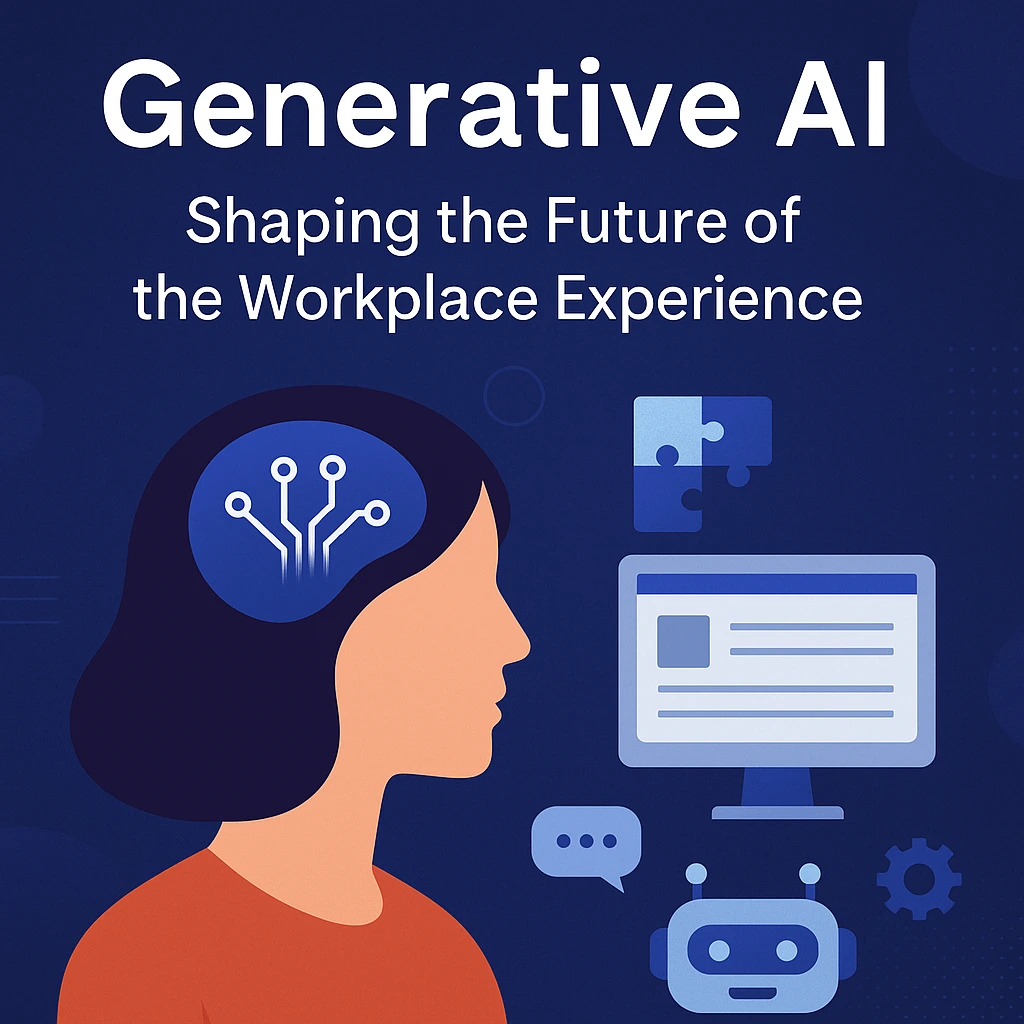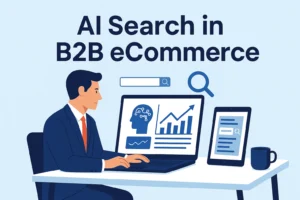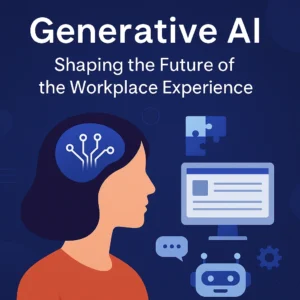Generative AI has moved from a niche technology into a transformative force that’s reshaping industries and workplace dynamics. With its potential to create content, streamline tasks, and revolutionise employee experiences, generative AI is not only enhancing productivity but also pushing the boundaries of creativity in the workplace. In this blog, we explore how generative AI is impacting the modern workplace and what businesses need to consider to harness its full potential.
What Is Generative AI?
At its core, generative AI refers to artificial intelligence models capable of generating new content. Unlike traditional AI, which is often focused on analyzing and making predictions based on existing data, generative AI creates entirely new data, whether it be text, images, video, or even code. These AI models are trained on vast datasets, enabling them to understand patterns and structures, and then use this knowledge to produce original outputs.
Some well-known examples of generative AI include OpenAI’s GPT-4 for text generation, DALL·E for image generation, and Google’s Bard for conversational AI. These tools are already used to generate everything from blog posts and social media content to new designs, artwork, and innovative solutions.
The Role of Generative AI in the Workplace
1. Enhancing Knowledge Discovery
In the modern workplace, employees often face the challenge of searching through vast amounts of data and information to find relevant insights. This can be time-consuming and often inefficient. Generative AI can dramatically improve knowledge discovery by synthesizing large volumes of data and providing concise, relevant, and contextually aware information in real-time.
For instance, AI can summarize documents, answer specific queries, or even recommend the next steps based on a person’s work or project. By doing so, it reduces the time employees spend searching for information, allowing them to focus on more value-added tasks.
2. Automating Routine Tasks
One of the most notable advantages of generative AI is its ability to automate routine and repetitive tasks. From drafting emails to scheduling meetings, AI can handle time-consuming processes, freeing up employees to focus on creative and strategic endeavors.
For example, generative AI can draft basic reports or summaries from raw data, automatically create email responses based on set guidelines, or assist with managing the company’s calendar by scheduling meetings based on participants’ availability. By automating these tasks, businesses can improve efficiency and reduce human error, all while enhancing employee satisfaction.
3. Personalizing Employee Experiences
Generative AI isn’t just for customer-facing roles; it can also play a crucial role in personalizing the employee experience. By analyzing employee preferences, behaviors, and performance data, generative AI can tailor training programs, internal communications, and even project assignments to suit individual needs and goals.
For example, an AI system could recommend personalized learning paths or deliver customized feedback based on an employee’s past performance. By tailoring the work experience to each individual, businesses can enhance employee engagement, satisfaction, and retention.
4. Facilitating Collaboration and Creativity
Generative AI can also transform collaboration in the workplace. Whether in remote or hybrid settings, AI tools can assist in brainstorming sessions, project planning, and document creation. These tools can generate ideas, suggest solutions to problems, and even assist with outlining complex projects.
In teams where innovation and creativity are key, generative AI can provide new perspectives, helping teams to think outside the box. Whether it’s generating a creative marketing campaign idea or offering alternative approaches to solving a business problem, AI can be a valuable collaborator, encouraging teams to innovate more effectively and efficiently.
Best Practices for Implementing Generative AI in the Workplace
While generative AI offers immense potential, businesses need to implement it thoughtfully to ensure it adds value to their operations. Here are a few best practices for integrating generative AI into the workplace:
1. Identify Clear Use Cases
The first step in integrating generative AI is to identify clear, actionable use cases. Businesses should pinpoint specific areas where AI can make an immediate impact. Whether it’s in customer service, content creation, product design, or workflow automation, it’s essential to focus on tasks where AI can add the most value without overwhelming employees.
2. Ensure High-Quality Data
Generative AI models rely on data to learn patterns and make predictions. For the best results, businesses must ensure they provide AI models with high-quality, relevant data. Training the AI on clean, well-organized datasets is critical to producing accurate and meaningful outputs.
Data security is also a critical consideration. Sensitive information must be handled carefully, and businesses must ensure that AI systems comply with privacy regulations like GDPR or CCPA to protect employees and customer data.
3. Prioritize Security and Ethics
When integrating AI into workplace systems, businesses must prioritize both security and ethics. Generative AI is a powerful tool, but it raises ethical concerns, especially in areas like content creation and decision-making. Businesses should put safeguards in place to prevent misuse of AI-generated content and ensure that it aligns with company values and industry regulations.
AI models should be regularly monitored to ensure they operate fairly and without bias. For instance, when using AI to generate employee recommendations or feedback, it’s vital to ensure the system is free from bias and reflects diverse perspectives.
4. Provide Training and Support
As with any new technology, training is crucial. Employees need to understand how to use generative AI tools effectively. Offering training programs, hands-on workshops, and continuous support will help employees get the most out of the technology, ensuring that they can leverage AI to improve their workflow and productivity.
The Future of Generative AI in the Workplace
The future of generative AI in the workplace is bright. As AI tools continue to evolve and become more sophisticated, their role in the workplace will only grow. Businesses that adopt and integrate these technologies early on will likely see significant improvements in efficiency, innovation, and employee satisfaction.
However, generative AI is not a magic bullet. While it can automate tasks and generate valuable insights, it’s still important to have human oversight and input. The most successful workplaces will be those that use AI to augment human capabilities rather than replace them.
Conclusion
Generative AI is a game-changer for the workplace, offering the potential to automate routine tasks, enhance creativity, improve collaboration, and personalize the employee experience. By implementing generative AI thoughtfully, businesses can unlock new opportunities for productivity and innovation, setting themselves up for success in the digital age.
As this technology continues to evolve, organizations must stay ahead of the curve by embracing AI while ensuring ethical and secure use. The workplace of the future will be one where humans and AI work together to create a more efficient, productive, and engaging environment for all employees.




